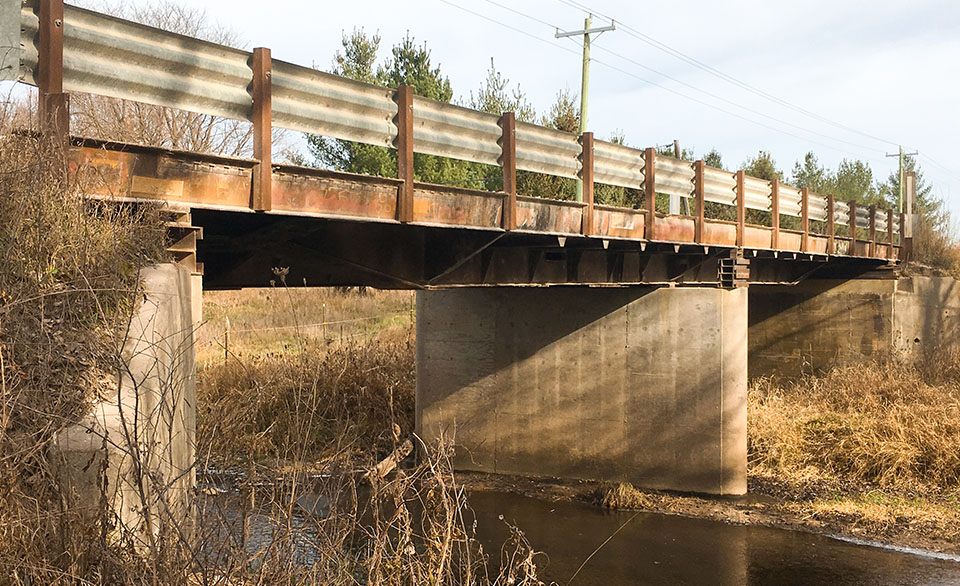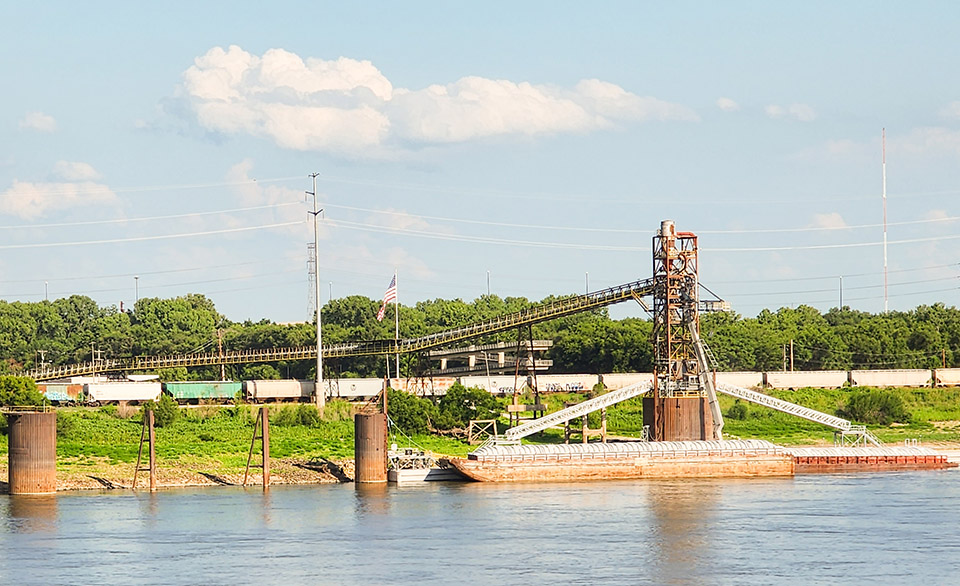Connecting farms to markets
September 1, 2023 | Kriss Nelson
Connecting the farm to the marketplace is an infrastructure that includes several bridges and inland waterway systems that are structurally deficient or outdated.
Here are the top three transportation infrastructures critical to Iowa agriculture.
No. 1: Rural bridges
Iowa may not be considered a water state where bridges are a large part of the transportation systems, but there are nearly 24,000 bridges, many of which are structurally deficient.
The issue is personal for Iowa Soybean Association (ISA) District 8 Director Warren Bachman, who farms on both sides of a bridge with a lower weight limit. This adds several miles to his commute with farm machinery.
“This adds to cost, time and efficiency,” says Bachman, who also serves as a director on the Soy Transportation Coalition (STC) board. “Rather than being able to travel on a rock road with minimal traffic, I am forced to travel a state highway. That is putting me and the motoring public at risk.”
According to the American Road and Transportation Builders Association Bridge Report, 19.3% of Iowa's 23,835 bridges are classified as structurally deficient, making Iowa No. 1 in the nation in that category.
“Rural roads and bridges are most relatable to farmers. It’s what they use,” says Mike Steenhoek, executive director of the STC. “If you don’t have an effective inventory of rural roads and bridges, it doesn’t matter what your rail or inland waterway conditions are; the product won’t get there. They are the first link in the supply chain.”
Each of the 4,604 bridges in Iowa considered structurally deficient has at least one key element in poor or worse condition.
Seven of the structurally deficient bridges are on the Interstate Highway System, according to report. A total of 99.6% percent of the structurally deficient bridges are not on the National Highway System, which includes the Interstate and other key roads linking major airports, ports, rail and truck terminals.

5,223 bridges are posted for load, which restricts the size and weight of vehicles crossing the structure.
The state has identified needed repairs on 15,025 bridges at an estimated cost of $3.7 billion.
The STC released the “Top 20 Innovations for Rural Bridge Replacement and Repair” report promoting more cost-effective approaches to replacing and repairing rural bridges without compromising safety.
The report features 10 concepts for replacing and 10 suggestions for repairing bridges that could result in 50% or more significant cost savings for rural counties.
“We’ve been promoting the report and doing a lot of outreach to counties in Iowa to encourage them to use this,” Steenhoek says.
No. 2: Locks and dams
The United States’ inland water system has kept U.S. agriculture competitive globally.
“It has been a secret to our success,” says Steenhoek. “They were built in the 1930s, and although the Army Corp of Engineers does a commendable job at maintaining them, they are not as efficient as modern agriculture requires.”
Seven locks have been prioritized — five on the Mississippi River and two on the Illinois River.
A new 1,200-foot lock chamber is being constructed at Lock and Dam 25, located north of the confluence of the Mississippi and Illinois rivers near Winfield, Missouri.
Steenhoek says this bodes well for agriculture.
“This is good news, and it is because of longtime advocacy from many in the agriculture and barge and towing industry,” says Steenhoek.
Funding was made available from the Infrastructure and Investment and Jobs Act, but that type of funding isn’t always available, Steenhoek says.
“We don’t have those infrastructure bills get passed routinely,” he says. “It is not every day you have one of those massive pieces of legislation that funds infrastructure.”
No. 3: Ports
The Mississippi Gulf Region is a critical piece of America’s infrastructure; 60% of the United States’ soybean exports leave that area.
To remain efficient, these ports need additional dredging to deepen the channel and maintenance due to its susceptibility to low or high-water conditions and hurricanes.

In 2019, the United Soybean Board (USB) announced a $2 million allocation to help offset the planning, design and research cost of deepening the lower Mississippi River from 45 feet to 50 feet.
AGP is expanding its export terminal at the Port of Grays Harbor on Washington state’s Pacific Coast near Aberdeen in response to the increase in soybean processing.
“AGP is making a substantial investment to their terminal, and the port is making an investment in expanding rail unloading capacity to service it,” says Steenhoek. “They are enhancing capacity out there, which is tapping into the whole change within our industry of additional soybean processing to produce more oil for the renewable fuel market, and it helps us to expand our soybean meal capacity.”
The United Soybean Board, ISA, the STC, and four other state soybean organizations worked together to help underwrite some costs for AGP’s expansion, raising $1.3 million.
“We need to do everything we can to keep this a reliable transportation system,” says Bachman.
On the Missouri River, between Council Bluffs and Sioux City, is NEW Cooperative’s Port of Blencoe.
This port is the farthest stop north on the Missouri River.
ISA provided $50,000 toward the construction of the site. Steenhoek also assisted NEW Cooperative with obtaining a grant from the Iowa Department of Transportation to pave the road to the port.
“We admire what NEW Cooperative did,” he says. “They are an example of a farmer cooperative wanting to take part more in the global marketplace, having autonomy over their supply chain and diversity over it.
Back